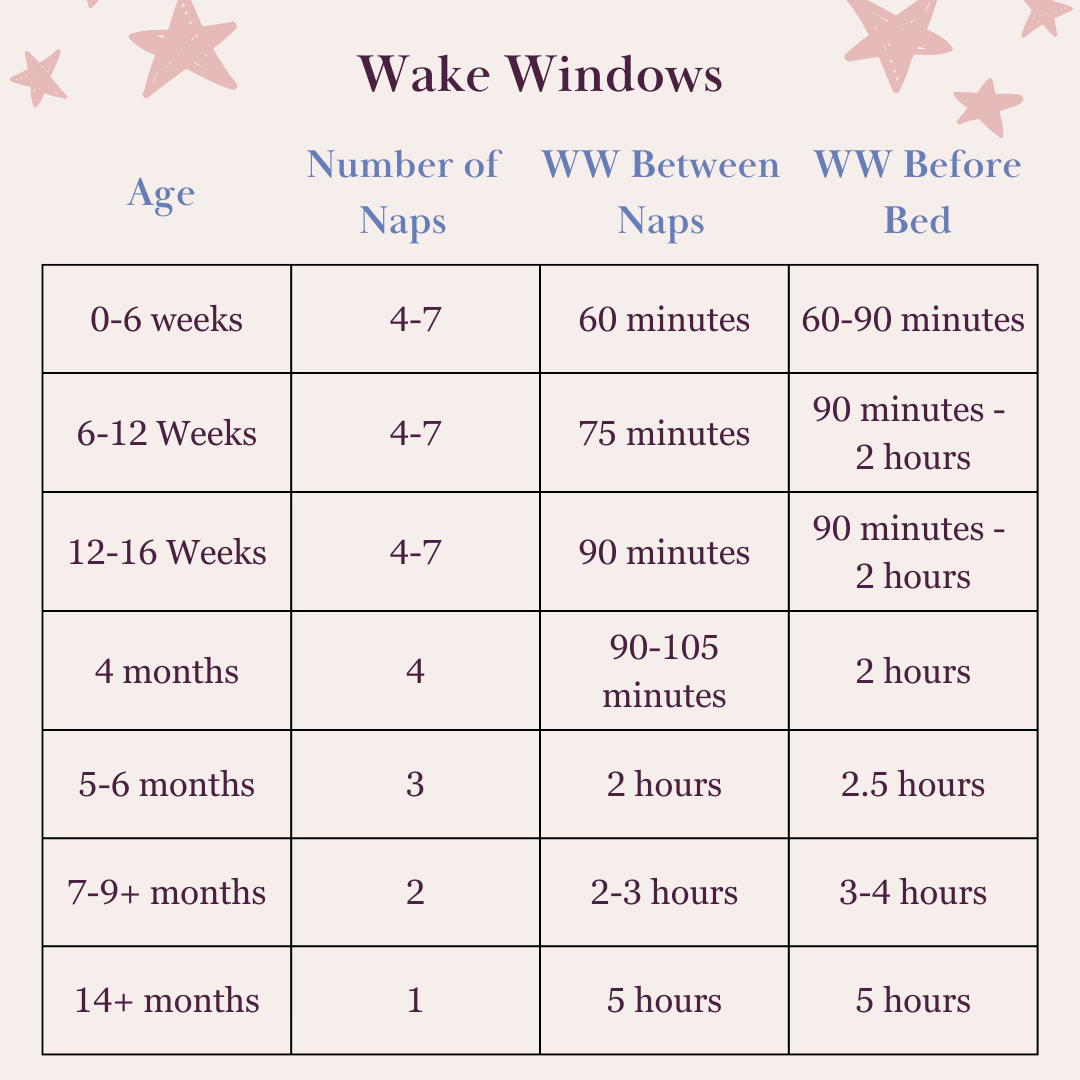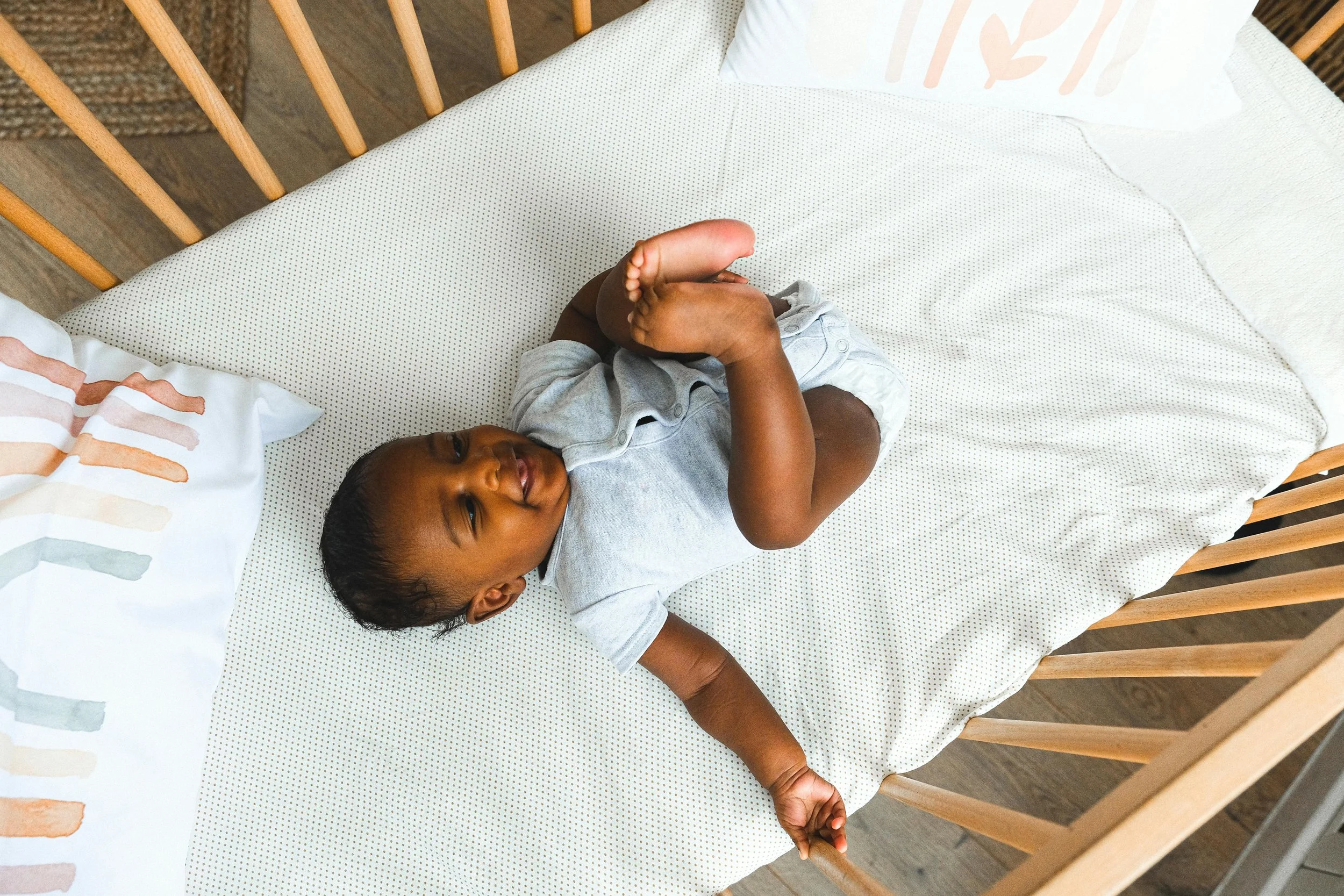Nap Trapped? Here Are 5 Top Tips to Help Your Baby Nap Independently
If you’re reading this, chances are you’ve got a little one snoozing on you right now!
The snuggles can be so wonderful, but if your baby insists on sleeping on you for every single nap—especially when they’re taking multiple naps a day—it can be exhausting. Feeling “touched out” is normal, and you shouldn’t feel guilty for craving some space. You’re human, and it’s okay to want time for yourself. Many parents have a love-hate relationship with contact naps, and that’s completely valid.
This blog will share my top 5 tips for helping your baby nap independently. These strategies can be used from the newborn stage onward, helping you work toward more restful, independent naps.
***A Quick Note About Newborns: For newborns, expectations around independent sleep should be lower. Developmentally, they’re not ready to fall asleep on their own, and short naps (45 minutes or less) are common in the first 5-6 months. However, by implementing these tips consistently, you’ll be setting the stage for longer, independent naps in the future.
During the newborn stage, even getting one or two independent naps a day is a win!
Getting the Timing Right
The first step to independent naps is putting your baby down at the right time. If they’re awake for too little time before their nap, they may take a long time to fall asleep or they may wake up soon after being set down because they’re simply not tired enough (undertired). On the flip side, if they’re awake for too long, they might get overtired—making it harder for their body to relax and fall asleep and stay asleep.
Think of it like Goldilocks: you’re aiming for “just right.”
A good starting point is understanding average wake windows for your baby’s age. A “wake window” refers to the time between when your baby wakes up and when they go down for their next nap. Don’t worry too much about the time it takes for them to actually fall asleep in the crib.
Here’s a helpful chart of wake window averages by age:
Remember, every baby is different! Watch for patterns and adjust based on your baby’s cues. If they’re taking a long time to fall asleep or waking after a short 15-20 minute nap, they might be undertired. If they seem stiff, jerky, or fussy at nap time, overtiredness could be the issue. As you play with wake windows, keep in mind that the younger the baby, the smaller adjustments you need to make to see a difference!
Start with First Nap of the Day
If you’re just starting to practice independent naps, focus on practicing at the first nap. This wake window is usually the shortest and easiest to figure out. Your baby will still have some residual melatonin (the sleepy hormone) from the night, which makes falling asleep easier. The effects of residual melatonin are especially noticeable in babies 3-5 months old and taper off as they get older. (See Shinohara & Kodama, 2011)
And as a bonus, practicing at the first nap also helps avoid overstimulation, which can make naps more challenging. To counteract overstimulation, create an ideal sleep environment: dark, cool, and quiet. Don’t worry—overstimulation becomes less of an issue as your baby grows and enjoys longer awake times.
Avoid the Transfer
If at all possible, I recommend avoiding the transfer, by helping your baby to sleep in their crib.
Try putting your baby down in their crib when you’ve seen sleepy cues and you’ve followed their wake window, and then help them go through the process of awake to drowsy to asleep all with your help. There are lots of tricks you can try here like:
offering a pacifier
swaddling (if baby isn’t rolling yet)
stroking their eyebrows or down the bridge of their nose
gently jostling them back and forth
patting
shushing
holding hands
rubbing their back (if they can roll independently
Helping your baby to sleep in their crib accomplishes two things, avoiding the transfer and it helps baby gets used to falling asleep in their sleep space. This method won’t always work and sometimes your baby will need you to rock/bounce and then transfer, that’s okay!
If you do need to transfer, wait 10-15 minutes after they’ve fallen asleep to ensure they’re in a deeper part of their sleep cycle. Keep them close as you lower them into the crib, gently lay them on their side, and then roll them onto their back to avoid triggering the startle reflex.
Help Extend Naps (when you can!)
If your baby wakes up from a short nap (anything under an hour or so) but still seems tired, try to extend the nap to at least the one-hour mark. You can do this by replacing your baby’s pacifier, patting/shushing in the crib, rocking/bouncing and transferring back to the crib, finishing with a contact nap, going for a walk, or using a carrier.
It can be a lot of effort, but helping your baby back to sleep to extend their nap will help set the stage for longer naps in the future. Be mindful of your baby’s cues—if they seem truly awake or are resisting sleep, it’s okay to have a “short nap.” Remember that it is normal for newborns naps to be short sometimes!
If your older baby (5-6+ months) is a frequent cat napper and they won’t go back to sleep regularly even with your help, I’d circle back to wake windows and consider extending them slightly to see if the increase in the sleep pressure (aka how tired they are) makes a difference!
Lastly, while there is value in helping your baby extend their naps, don’t sacrifice your mental health over it. It can be draining to spend time trying to get your baby back to sleep, especially if your baby is napping multiple times a day. Try to extend naps for 10-15 minutes at most, and if that’s not working, move on with your day! And, don’t worry if you can’t do it for every single nap time, it’s like a drop in a bucket, it all adds up over time!
Teach Independent Sleep Skills
As a pediatric sleep consultant, I have found that sleep learning (training) can be the answer for many families if sleep is unsustainable for your family. Sleep learning helps your baby learn how to fall asleep on their own and gives your baby the ability to meet their own sleep needs and helps you get the rest you deserve.
Successful sleep learning depends on your baby’s readiness, an age-appropriate schedule, and ruling out other factors like hunger, pain, or sensory needs. Pairing this with a method that aligns with your baby’s temperament and your parenting style is essential. Remember, sleep learning is only appropriate for babies that are at least 4 months old.
At The Baby Sleep Haven, I use four customizable methods ranging from gradual approaches to more accelerated ones, depending on your baby’s temperament and your parenting style. The goal? A baby who can fall asleep independently 90-95% of the time with minimal or no fussing.
We’re Here For You!
I’ll end with this: there’s nothing wrong with contact naps if they work for you and your family. If or when you’re ready to work toward independent naps, it is never too late for your baby to learn. I also want to reassure you that you can still have occasional contact naps with an independent sleeper!
If you’re looking for more in-depth guidance on naps, check out The Complete Nap Guide: Your Step-by-Step to Daytime Sleep Success. This comprehensive resource covers everything you need to know, from creating the ideal sleep schedule and environment to managing nap transitions, tackling common regressions, and more. It’s designed to grow with your baby, offering tailored advice for each stage and addressing common sleep challenges at every age. With this guide, you’ll feel empowered and equipped with the tools to help your baby sleep well in their first few years of life!
If you’re feeling overwhelmed or unsure where to start, a personalized consultation might be the right option for you! I’ll work with you to create a tailored plan that fits your baby’s unique needs and helps your whole family get better rest.
Reference
Shinohara, H., & Kodama, H. (2011). Relationship between circadian salivary melatonin levels and sleep-wake behavior in infants. Pediatrics in Review, 53(1), 29-35. https://doi.org/10.1111/j.1442-200X.2010.03186.x




